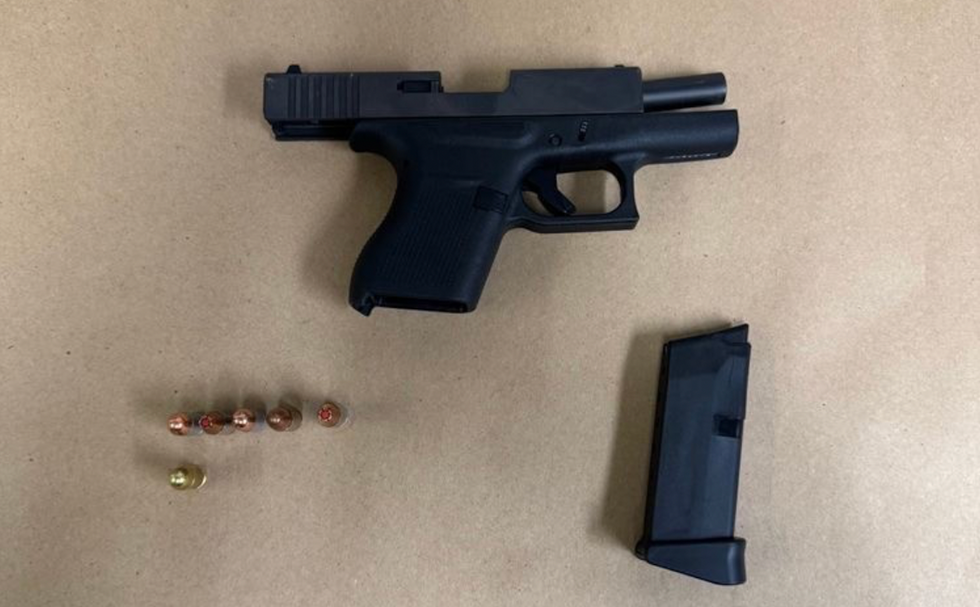Navy’s job is deterrence, but that means being ‘highly visible’ around the globe
Military branch has profound strengths but facing 'chronic underfunding' from lawmakers



The United States Navy’s purpose is to deter war by being ready to fight and win. Deterrence requires that the Navy be highly visible throughout the world’s oceans and seas.
Building and maintaining a world-spanning navy ready to fight and win against any adversary is expensive. War starting because adversaries believe the U.S. Navy is not capable of winning would be much more expensive in blood and money.
Following the collapse of the Soviet Union, the United States slowed naval spending as a percentage of gross domestic product (GDP) with the confidence that it had no meaningful naval competitor. Over time, this has led to a reduction of the number of naval ships in the U.S. fleet. During this same period, the People’s Republic of China was building naval ships at a faster pace than the United States and now has a larger naval fleet. The People’s Liberation Army Navy (PLAN) is not only larger than the U.S. Navy, but its ships are in most respects approaching the same level of fighting capability.
Today, the U.S. Navy has a peer naval competitor in the Chinese PLAN and does not have enough resources to counter it and perform its other assigned global duties. Catching up to current requirements, let alone those which might come from China in the future, will be expensive, difficult, and time consuming. Maintaining the current U.S. naval spending as a percentage of GDP will increase the risk of war.
Increasing the pace of building major naval combatants such as supercarriers and their F35 aircraft, nuclear submarines, and guided missile destroyers is crucial to the goal of deterrence. U.S. shipyards will need to increase their skilled workforces. Component suppliers will need to invest in new production lines. Congress and the Department of Defense need to radically change procurement processes relating to building and maintaining state-of-the-art naval vessels. These major blue water combatants are essential for deterrence and for victory if actual hostilities occur.
Despite chronic underfunding the U.S. Navy has profound strengths. The nuclear submarine fleet is vastly superior on a vessel-to-vessel basis to anything else in the world. Likewise, the aircraft carrier fleet and related naval aviation assets are much larger and far better than those of any other country. The surface fleet components, exemplified by the Arleigh Burke missile destroyers, possess a war fighting capability almost inconceivable for ships of this class at the beginning of the present century.
What sets the U.S. Navy apart from those of all other countries is the skill and experience of its personnel. The training, discipline and dedication to excellence built on traditions of professionalism and individual initiative make U.S. Navy sailors, aviation personnel and submariners the best in the world. When given the tools, they will leverage them to the maximum level of performance.
Additionally, the U.S. Navy is an innovative institution. One example of this trait is the important progress in developing uncrewed (drone) systems for undersea, surface and ariel use. These uncrewed systems will increase the war-fighting capability of the entire fleet eventually.
In the meantime, the U.S. Navy must make up for its inadequate existing resources to cover its current obligations. A partial response to its arsenal deficiencies might be to introduce a substantial number of small, guided missile boats to the fleet. These boats could build rapidly as offensive weapons platforms able to provide ship-killing lethality in time of war and serve as a visible deterrent presence in coastal areas in periods without active hostilities. Their mission would be training for war and showing the flag. These small missile boats would be distinct from U.S. Coast Guard patrol boats with missions such as drug interdiction, undocumented immigrant patrol, fisheries protection, and search and rescue. These missile boats would have a focused anti-enemy ship, anti-enemy boat mission.
The U.S. Navy’s recent experiment with Littoral Combat Ships (LCS) presents a cautionary lesson about introducing a new class of vessel into the fleet. However, the recommended small missile boats are existing Coastal Patrol Boats (CPB) powered by widely used marine diesel engines. The U.S. Navy can equip these boats with missiles already in use in the fleet.
The optimal missile boats would be around one hundred feet in length and have crews of fewer than ten people. These small boats are inexpensive to build or buy and to operate. Small crews would minimize the strain on the U.S. Navy’s personnel levels while providing a visible deterrence presence.
Small missile boats can free up larger vessels for missions requiring their unique capabilities. These smaller boats, armed with advanced guided missile systems can punch well above their size.
Moving promptly to obtain small missile boats for the U.S. Navy will give it time to increase the size of the major combatant fleet. It would also enhance the existing fleet’s ability to deter potential adversaries from miscalculating the U.S. resolve to maintain freedom of the seas in both the short and long term. Operating these small boats as integral elements of the U.S. Navy would supply a sorely needed force multiplier.
U.S. boat manufacturers are currently producing Coastal Patrol Boats. Ironically, the U.S. sells U.S. manufactured Coastal Patrol Boats through the Foreign Military Sales Program, but the U.S. Navy does not use such boats as part of its fleet. Boat builders can add guided missile launchers to the existing design.
The U.S. Congress needs to step up and provide funding for building Coastal Patrol Boats and reduce onerous procurement regulations which discourage U.S. boat manufacturers from producing such vessels. There is currently a window of opportunity to strengthen U.S. Naval deterrence.
The world is in a precarious era with a diminished U.S. Navy and a burgeoning People’s Liberation Army Navy among other threats and challenges. Rising to the occasion with increased production of both small boats and big ships will enable the United States to again speak softly and carry a big stick in the maritime world.
Peter A. Michel is a surface warfare officer veteran who served on an aircraft carrier and a guided missile destroyer.
SUPPORT TRUTHFUL JOURNALISM. MAKE A DONATION TO THE NONPROFIT WND NEWS CENTER. THANK YOU!
Originally Published at Daily Wire, World Net Daily, or The Blaze
What's Your Reaction?
































































































